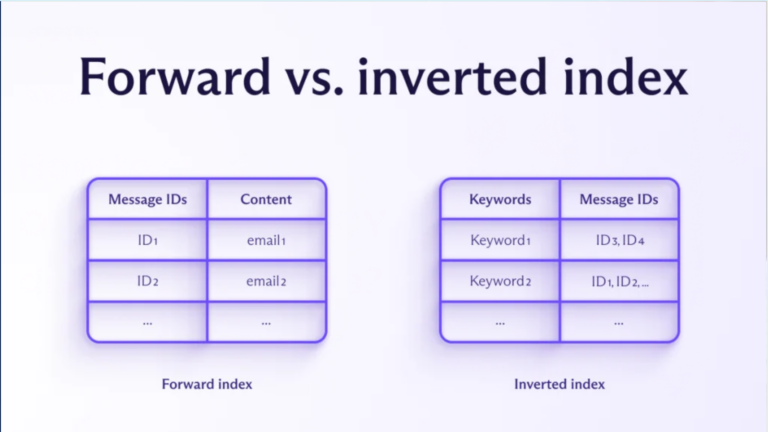In the vast world of search engines, efficient indexing plays a crucial role in retrieving relevant search results quickly. Forward index and inverted index are two fundamental techniques employed in this process. Both serve as the backbone of search engines, but they differ significantly in terms of structure and functionality. In this article, we will delve into the concept of the forward index and inverted index, understand their working principles, and explore their respective advantages and use cases.
Understanding Forward Index
Forward index, also known as a document index or posting list, is a simple yet effective indexing method used by search engines. It follows a straightforward approach of mapping documents to their corresponding terms or keywords. In a forward index, each document is associated with a list of terms it contains, along with additional information like term frequency and document location.
Let’s consider an example: Suppose we have three documents – Document A, Document B, and Document C. The forward index for these documents would look like this:
Document A: [keyword1, keyword2, keyword3]
Document B: [keyword2, keyword4]
Document C: [keyword1, keyword3, keyword5]
As shown, each document is associated with the terms it contains, forming a direct mapping. The forward index facilitates fast document retrieval based on specific keywords. However, it requires scanning the entire index to locate documents containing a particular keyword.
Introducing Inverted Index
Unlike the forward index, an inverted index focuses on mapping keywords to documents. It stores a comprehensive list of all unique keywords in a corpus and associates each keyword with the documents that contain it. This inverted structure allows for efficient search and retrieval operations.
Continuing our example, the inverted index for the three documents would look like this:
keyword1: [Document A, Document C]
keyword2: [Document A, Document B]
keyword3: [Document A, Document C]
keyword4: [Document B]
keyword5: [Document C]
In the inverted index, keywords are the primary keys, and they point to the documents that contain them. This inverted structure enables fast searching for documents based on specific keywords. It serves as a crucial component of search engines, providing rapid retrieval of relevant documents.
Comparing Forward Index and Inverted Index
Forward index and inverted index have distinct characteristics that make them suitable for different search scenarios. Here are some key comparisons:
Structure:
Forward Index:
Document-based mapping of terms.
Inverted Index:
Keyword-based mapping of documents.
Search Speed:
Forward Index:
Slower for keyword-based searches, as it requires scanning all documents.
Inverted Index:
Faster for keyword-based searches, as it directly maps keywords to documents.
Storage Efficiency:
Forward Index:
Can be more space-consuming, especially for large document collections.
Inverted Index:
Generally more space-efficient, as it focuses on unique keywords rather than duplicating terms across documents.
Conclusion
Forward index and inverted index are two essential indexing techniques that underpin the functioning of search engines. While the forward index provides a direct mapping of documents to their terms, the inverted index maps keywords to the documents containing them. Both methods have their strengths and use cases. The forward index excels in cases where document retrieval is the primary concern, while the inverted index shines when fast keyword-based searches are required. Understanding these indexing techniques helps us appreciate the complex mechanisms behind search engines and enables us to optimize search experiences for users.




